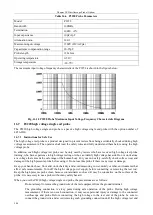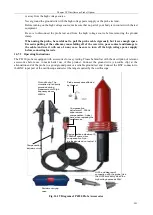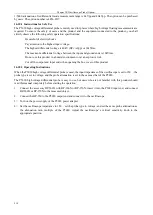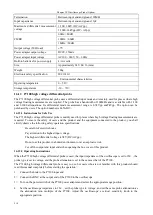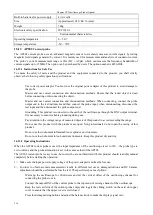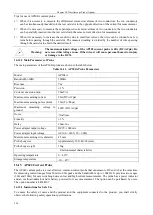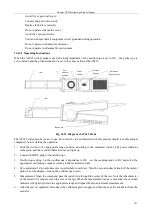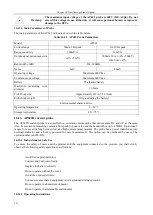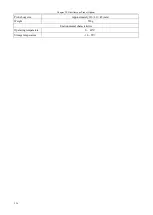
Chapter XVIOscilloscope Probe (Option)
213
read this manual completely before starting the operation:
1
)
Connect the hook to the P6100 input end.
2
)
Connect the BNC at the output end of the P6100 to the oscilloscope.
3
)
Turn on the power switch of the P6100 power adapter and select the appropriate range position.
4
)
Set the oscilloscope impedance to 1M
Ω
, set the probe type to voltage, and set the same probe attenuation as
the attenuation ratio multiple of the P6100. Adjust the oscilloscope
’
s vertical sensitivity knob to the
appropriate position.
Power adapter
Hook
BNC output
cable
Power indicator
Attenuation
switch
Probe body
Power switch
Adapter
access
Hook access
cable
Fig. 16.28 Diagram of P6100 Probe Accessories
Warning:
The maximum input voltage of the P6100 high voltage differential probe is 14kV
(DC+ACpp). Do not exceed this voltage in use. Otherwise, it will cause personal
hazard or injury or damage to the DUTs.
16.11.3 Main Parameters of Probe
The main parameters of the P6100 probe are shown in the table below.
Table 16.11 P6100 Probe Parameters
Model
P6100
Bandwidth (-3dB)
100MHz
Precision
± 1%
Attenuation ratio
1/100, 1/1000
Summary of Contents for 4456 Series
Page 10: ...VIII...
Page 55: ...Chapter V Trigger System 45 Fig 5 51 RF Test Signal Example...
Page 69: ...Chapter VII Mathematical Operation 59 Fig 7 10 Advanced Math Example...
Page 71: ...Chapter VIII Display System 61 Fig 8 3 Wfm Palette Menu Fig 8 4 Normal Palette...
Page 72: ...Chapter VIII Display System 62 Fig 8 5 Inverted Palette Fig 8 6 Temperature Palette...
Page 75: ...Chapter VIII Display System 65 Fig 8 12 XY Display Example...
Page 165: ...Chapter XI Protocol Analyzer Option 155 Fig 11 242 1553 Trigger and Analysis Example...


